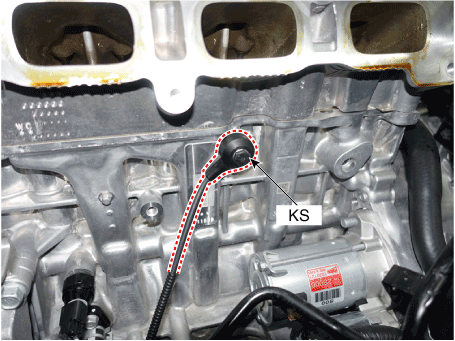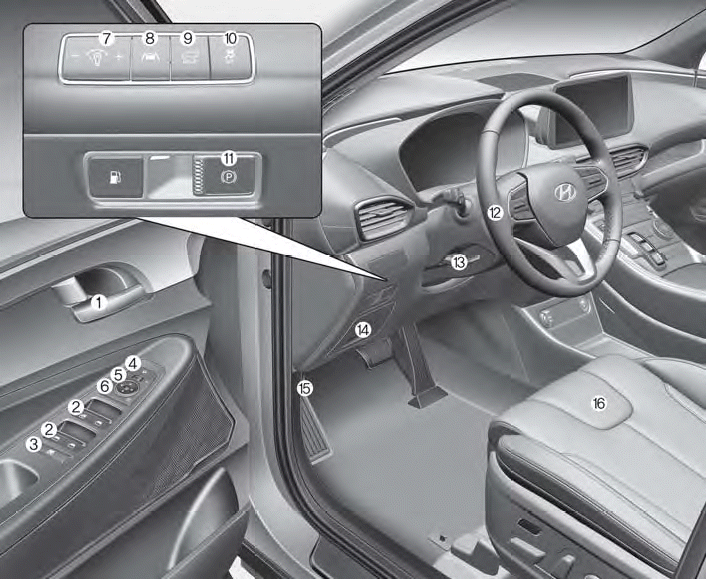Hyundai Santa Fe: Engine Control System / Knock Sensor (KS). Description and operation
Hyundai Santa Fe (TM) 2019-2025 Service Manual / Engine Control/Fuel System / Engine Control System / Knock Sensor (KS). Description and operation
| Description |
Knocking is a phenomenon characterized by undesirable vibration and noise and
can cause engine damage. Knock Sensor (KS) is installed on the cylinder block
and senses engine knocking.
When knocking occurs, the vibration from the cylinder block is applied as pressure
to the piezoelectric element. When a knock occurs, the sensor produces voltage
signal. The ECM retards the ignition timing when knocking occurs. If the knocking
disappears after retarding the ignition timing, the ECM will advance the ignition
timing. This sequential control can improve engine power, torque and fuel economy.

 Camshaft Position Sensor (CMPS). Repair procedures
Camshaft Position Sensor (CMPS). Repair procedures
Inspection
1.
Check the signal waveform of the CMPS and CKPS using the diagnostic
tool.
Specification : Refer to "DTC Diagnostic Guide"
Removal
•
DON’T remove the camshaft position sensor during engine running
or right after engine stops, or a scald by the flowed out engine
oil may occur...
Other information:
Hyundai Santa Fe (TM) 2019-2025 Service Manual: Schematic diagrams
System Block Diagram Component Parts And Function Outline Component part Function Vehicle-speed sensor, ESP/ABS Control Module Converts vehicle speed to pulse. ECM Receives signals from sensor and control switches...
Hyundai Santa Fe (TM) 2019-2025 Service Manual: Transaxle Control Module (TCM). Repair procedures
Inspection 1. TCM ground circuit test : Measure the resistance between TCM and chassis ground. (Inspect the terminal connected to the chassis ground with the back of harness connector as the inspection point of TCM side...
Categories
- Manuals Home
- 4th Generation Santa Fe Owners Manual
- 4th Generation Santa Fe Service Manual
- Warning and indicator lights
- System settings
- Power adjustment
- New on site
- Most important about car
Interior Overview

1. Inside door handle
2. Power window switches
3. Power window lock button/Electronic child safety lock button
4. Side view mirror folding button
5. Side view mirror control switch
6. Central door lock switch
7. Instrument panel illumination control switch
Copyright © 2025 www.hsafe4.com

